What Does an Elopement Ceremony Look Like?
Once you’ve decided to break from tradition and elope, one of the things that we find can be most stressful is deciding what an elopement ceremony should look like! The freedom of choice can be overwhelming, and truly there are SO MANY options. We break this down one decision at a time in our elopement Planning Portal that we provide to each of our couples, but here we’re going to give you an idea of some of the parts to focus on that will help you start to shape your dream ceremony.
Disclosure: Sometimes we use affiliate links in our elopement planning blog posts and as an Amazon Associate we earn from qualifying purchases. This does not cost you anything, but it helps support the creation of these free, informational blog posts. Thank you for your support!
Updated March 1st, 2023





Writing Your Vows
This is probably the most important part of an elopement ceremony if not all ceremonies. Well-thought-out vows are the central pillar on which all other ceremony decisions are based.
We recommend that you spend more than just one evening writing your vows. A simple suggestion is to jot things down over the months leading up to the wedding and then combine those thoughts over time. For example, you just had a great date night and you’re feeling all sorts of lovey-dovey about your partner. That’s a great time to take your thoughts and save them somewhere. Even just a small phrase or sentence in a note on your phone, in a journal, anywhere really.
The actual writing of your vows may not happen until closer to your wedding date, but by then you’ll already have so many thoughts and ideas that it will be easy to piece them together into a more complete thought. The more time you can spend on your vows, the better they’ll usually turn out.
Are you feeling overwhelmed about writing vows for your elopement?
Our Vow Writing Guide is your go-to companion for transforming the daunting task of crafting your wedding vows into a meaningful experience. Whether you're planning an intimate elopement or a grand celebration, this comprehensive guide is designed to help you navigate the overwhelming journey of putting your love into words.
Write Your Vows With Confidence:
Bid farewell to the anxiety of facing a blank page. Our guide will provide expert guidance and creative prompts to spark your imagination. Banish writer's block as you embark on a personalized journey to express your unique love story.
Private Vow Exchange and a Ceremony with Guests
Alright, we know this sounds weird, but hear us out. Do you really want the experience of a private ceremony, but also want to include your guests? Do both!
Many of our couples opt to read the personal vows they’ve written in private, just the two of them, and then have a more traditional ceremony afterward with their guests. At the ceremony with your family, you can read more traditional vows, or you can re-read your personal vows. In our experience, this is often the best option for someone who is torn between wanting a truly private experience, and also wanting their friends and family to be involved.

Ceremony with Guests
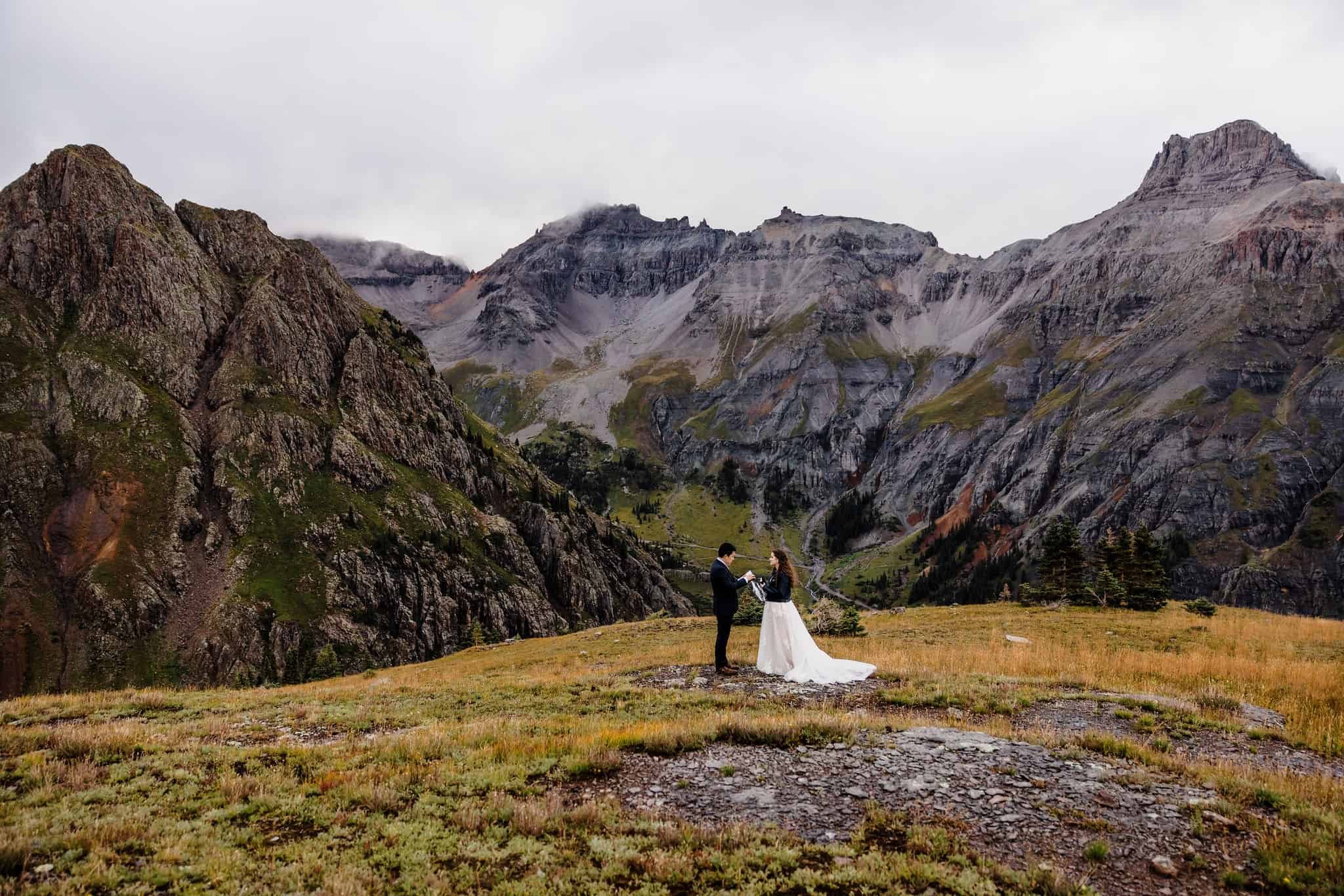
Private Vow Exchange
Sample Elopements with a Private Vow Exchange
Do You Want an Officiant?
One of the main pieces of most traditional wedding ceremonies is an officiant. Someone to speak to the significance of a wedding and help guide the proceedings. There is a pretty even split in how to handle this amongst our elopements and small weddings, and here are the three options that couples typically choose from:
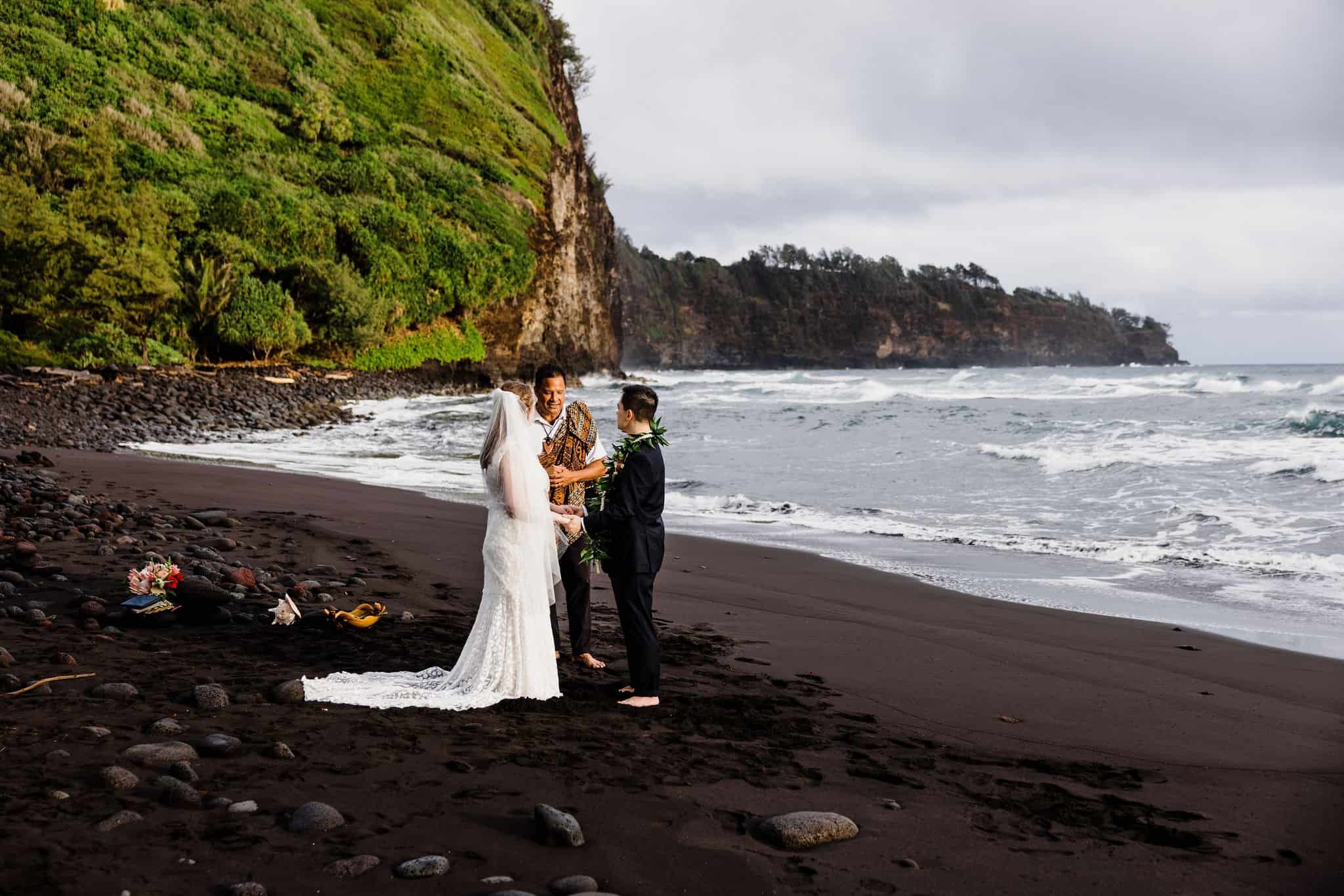
Hire an Officiant
Believe it or not, there are a lot of officiants who specialize in adventurous elopements! We’ve worked with some really good ones, and their expertise can lend some importance to the events as well.
The good ones will be in communication with you before the big day to get to know you better so they can tailor your ceremony to your beliefs and interests. Just make sure they’re willing to go wherever it is you’re planning for your ceremony to be!

Have a Friend or Family Member Officiate Your Ceremony
This is probably the most common option chosen for a small wedding. Having a family member or friend officiate your wedding allows you to put someone who really knows you in charge of the proceedings. Their speech and readings can often provide a great deal of depth to the ceremony because they know more about your relationship.
If you’ve asked someone to fill this role and they are unsure of how to act as an officiant, we can them in the time leading up to the ceremony so they feel confident about what to do before, during, and after.
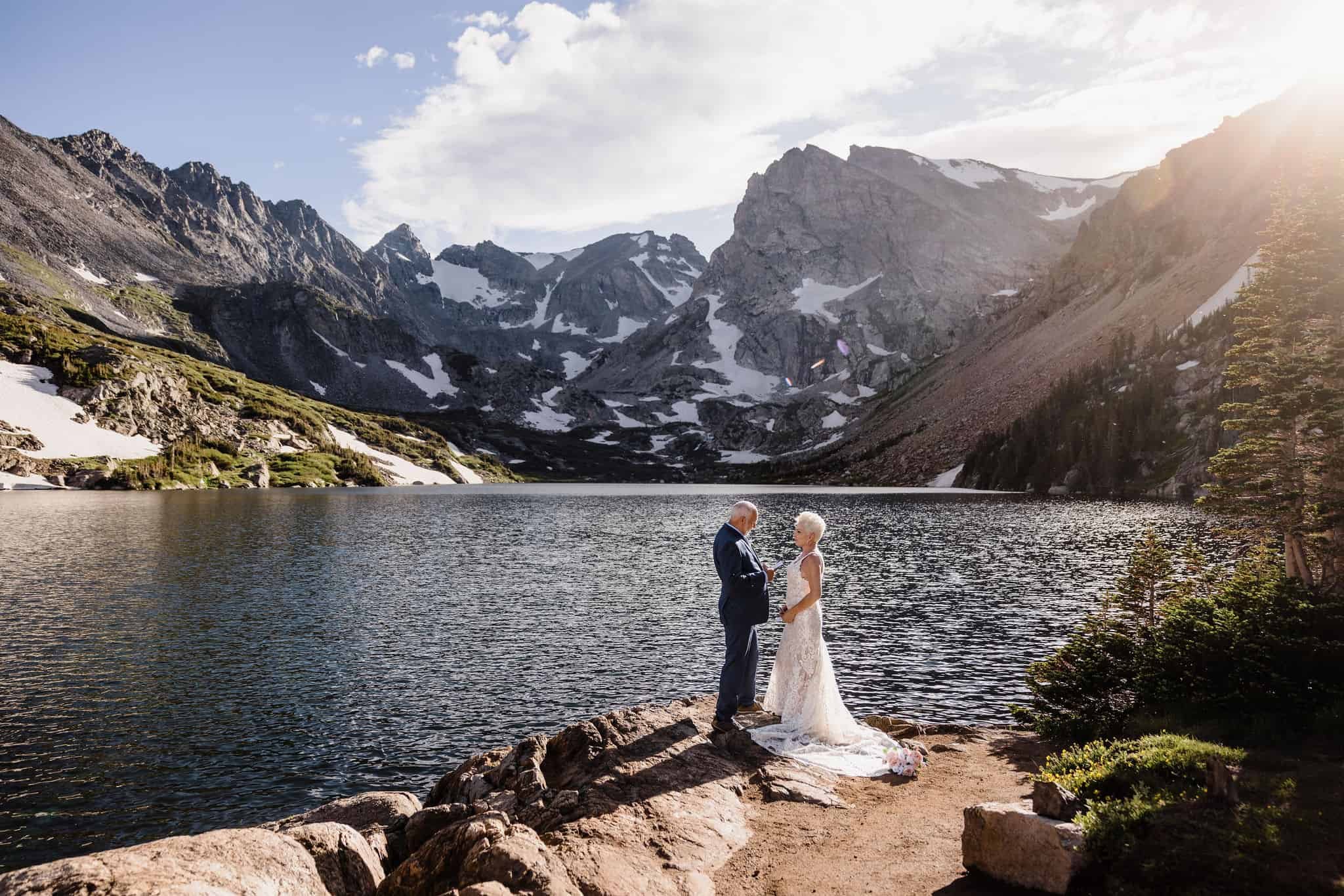
Lead Your Own Ceremony
In some states, you’re allowed to legally get married without an officiant present. This is called “self-solemnizing” and Colorado is one of those states!
But even in other locations, our couples often decide to keep their ceremony solely about them with no one else around. The legal side of your marriage can be taken care of before or after your ceremony if you go this route.
Ceremonies Officiated by a Friend or Family Member
In many states, it is very simple to have a friend or family member legally officiate your wedding! Sites like Universal Life Church make it simple and free to become ordained. Be sure to contact the county that you plan to get married in to be sure that the state recognizes officiants from Universal Life Church.

Writing The Ceremony
If your friend or family member has never officiated a wedding before, it can be a bit daunting to write an entire ceremony on their own. There are many other places online to find sample ceremony scripts, but those can be a bit generic. We recommend making your ceremony as personalized as possible.
Here is a general outline of a ceremony, but as always, it should be customized for you:
An optional walk down the aisle.
Officiant thanks everyone for being there, maybe talks about your elopement location or the journey to your elopement location
Officiant shares your story with your guests. This can include: how you met, what you’ve accomplished together, some of the milestones in your life together (buying a house, adopting a dog, moving to a new state, etc.), the story of your proposal, the story of how you decided to elope and how you chose your elopement location. It can be as detailed or as simple, funny, or sentimental as you’d like. And don’t forget to leave some pieces of your story to include in your vows!
Optional reading, either by your officiant or another guest
Partner 1 reads their handwritten vows
Partner 2 reads their handwritten vows
Ring exchange
Optional prayer if you’re religious or a unity ceremony
Officiant pronounces you married
First kiss
Group hugs and celebrations

Sample Elopements with an Officiant
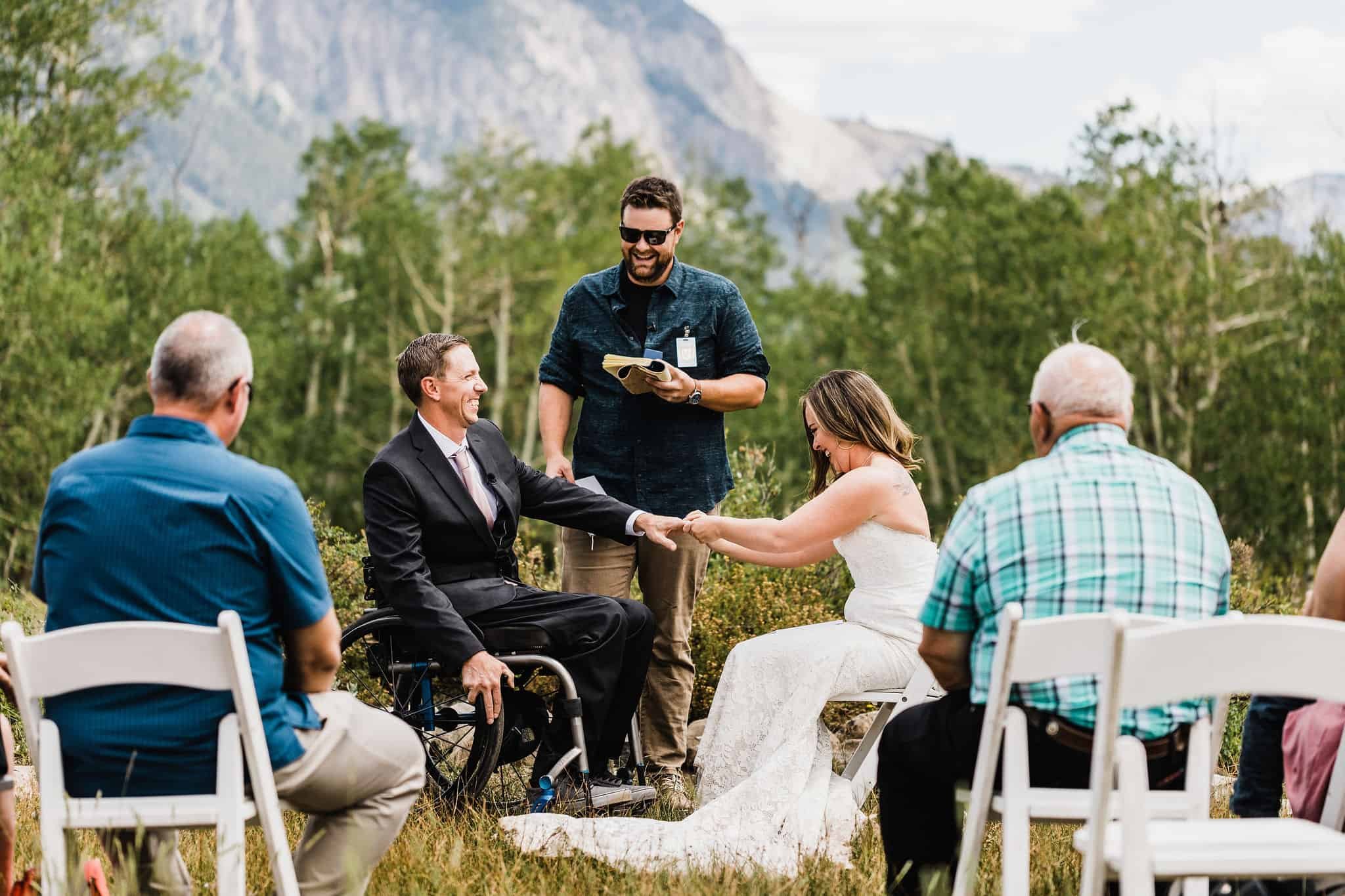
Have questions about how your friend or family member can legally perform your ceremony?
Check out our Guide to Getting Ordained Online
Feeling overwhelmed with writing your own elopement ceremony?
Check out Provenance’s custom ceremony builder
Ceremonies Without an Officiant
With so many of our couples choosing to lead their own ceremonies, we often get questions about what this actually looks like! As with anything elopement-related, the sky is the limit. But here are some ideas to get you started!


If You Don’t Have Guests
Often, our couples eloping without any guests choose to keep their ceremonies short and simple. In a ceremony like this, it is very important that you spend the time to write thoughtful vows. It also never hurts to discuss how long you'd like your vows to be so you are both on (roughly) the same page. We definitely recommend aiming for a minimum of close to 3 minutes each to really give it some weight, and help it feel like vows more than just a quick profession of love.
Here is the flow of a simple elopement ceremony like this, but feel free to customize it:
An optional walk down the aisle
Partner 1 reads their handwritten vows
Partner 2 reads their handwritten vows
Ring exchange
First kiss
Another option that we offer to couples without guests is for Alex to set the tone and provide some structure by reading a small piece to start off the ceremony. We find that this helps make the ceremony feel as grand as an elopement deserves to be, and helps guide you through the ceremony. Alex can also perform legal ceremonies in most states.

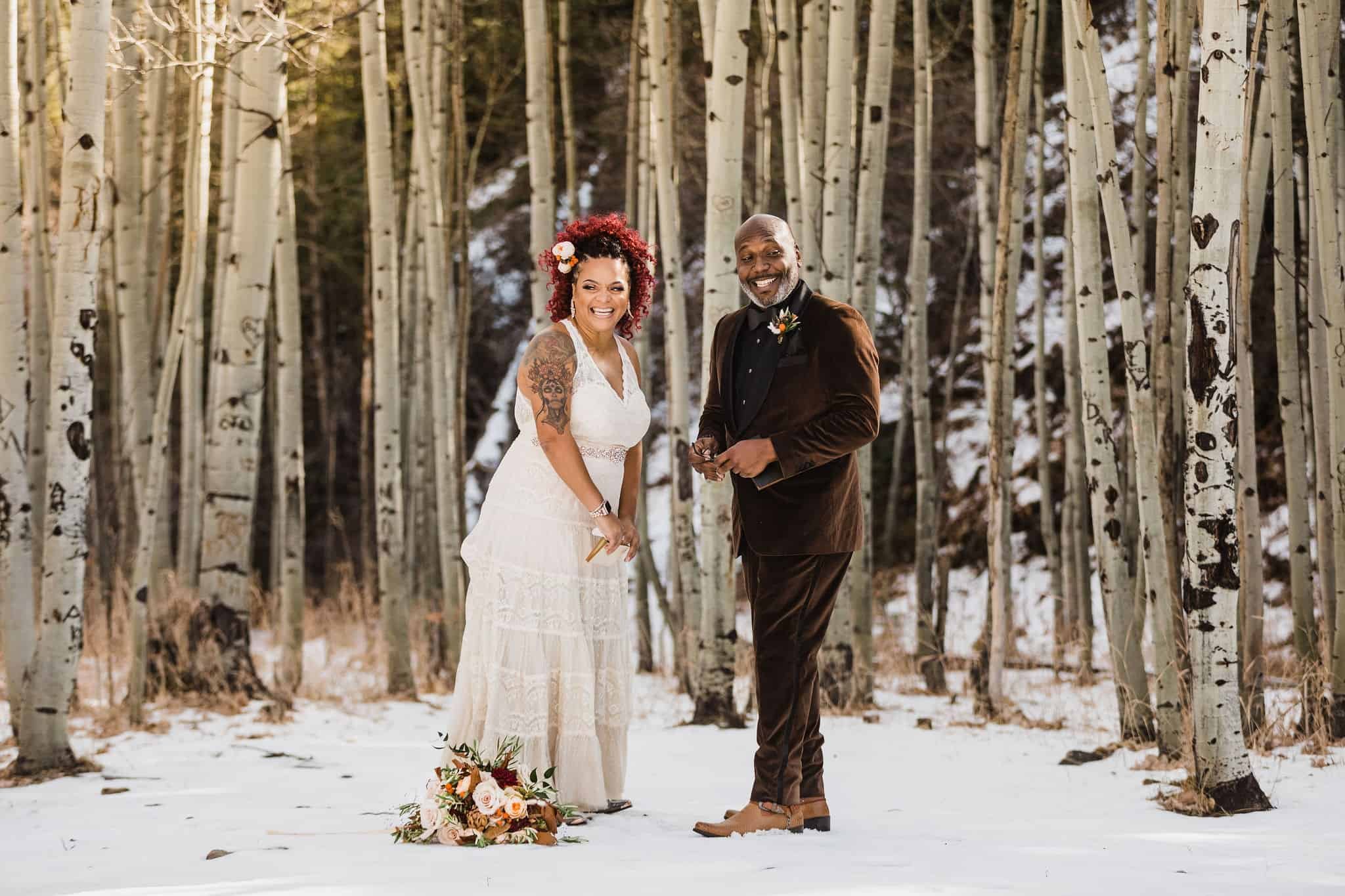

If You Do Have Guests
If you are having guests at your ceremony, you can very easily follow the simple outline above. But if you’re looking to add a bit more depth to your ceremony, in addition to writing thoughtful vows, we recommend addressing your guests and sharing some of your story with them. This part of the ceremony is something that we recommend writing together, and transcribing into your vow books so you can easily read it during the ceremony. Most often, our couples will take turns speaking during this part. And like an elopement without any guests, we encourage you to spend time writing thoughtful vows to follow your introduction.
Here is what that could look like, but feel free to customize it:
An optional walk down the aisle
Thank everyone for being there, for supporting your relationship, etc.
Share your story with your guests. This can include: how you met, what you’ve accomplished together, some of the milestones in your life together (buying a house, adopting a dog, moving to a new state, etc.), the story of your proposal, the story of how you decided to elope and how you chose your elopement location. It can be as detailed or as simple, funny, or sentimental as you’d like.
Partner 1 reads their handwritten vows
Partner 2 reads their handwritten vows
Ring exchange
A fun way to include your guests is to have them pronounce you as married. It’s so fun to hear your guests all simultaneously say, “We now pronounce you married!” Just make sure everyone knows that this is the plan so they can participate.
First kiss
Group hugs and celebrations
Sample Elopements without an Officiant

Have questions about self-solemnizing your elopement ceremony?
Check out our Guide to Self-Solemnization

Other Traditions for Your Ceremony
Even though you’re eloping, you’re still allowed to incorporate cultural traditions into your elopement or small wedding! Depending on your location’s layout and rules, you may have to modify them a little bit to fit, but if it’s important to you then there’s always a way to make it work. A hiking trail can make for a pretty awesome wedding aisle if you ask us!
The most common traditions that we see couples keeping are the exchanging of rings and a first kiss, but some have done handfasting, breaking of the glass, ring warming, a moment of prayer, sharing a drink of scotch, or exchanging leis.


After the Ceremony
So you’ve just said your vows and had your first kiss, now what? If you have your family with you, it’s probably a good time to call them all in for a hug! There’s gonna be lots of emotions happening, so I’m sure everyone would welcome that! Then once you’ve had that chance, move into popping champagne, or taking a few family photos.
If you’re doing things on your own, the first thing you should do after your first kiss is to pause and really soak it all in! Look around, stare at each other, and hold your partner close. You eloped to have this moment right here, so take as long as you need to commit it to memory.
Then, you can sit and relax for a few more minutes, you can have a picnic if your sudden lack of nerves has made your hunger come out of nowhere, now could be a good opportunity to FaceTime with your family, or you can slowly gather up your things to begin the hike back.

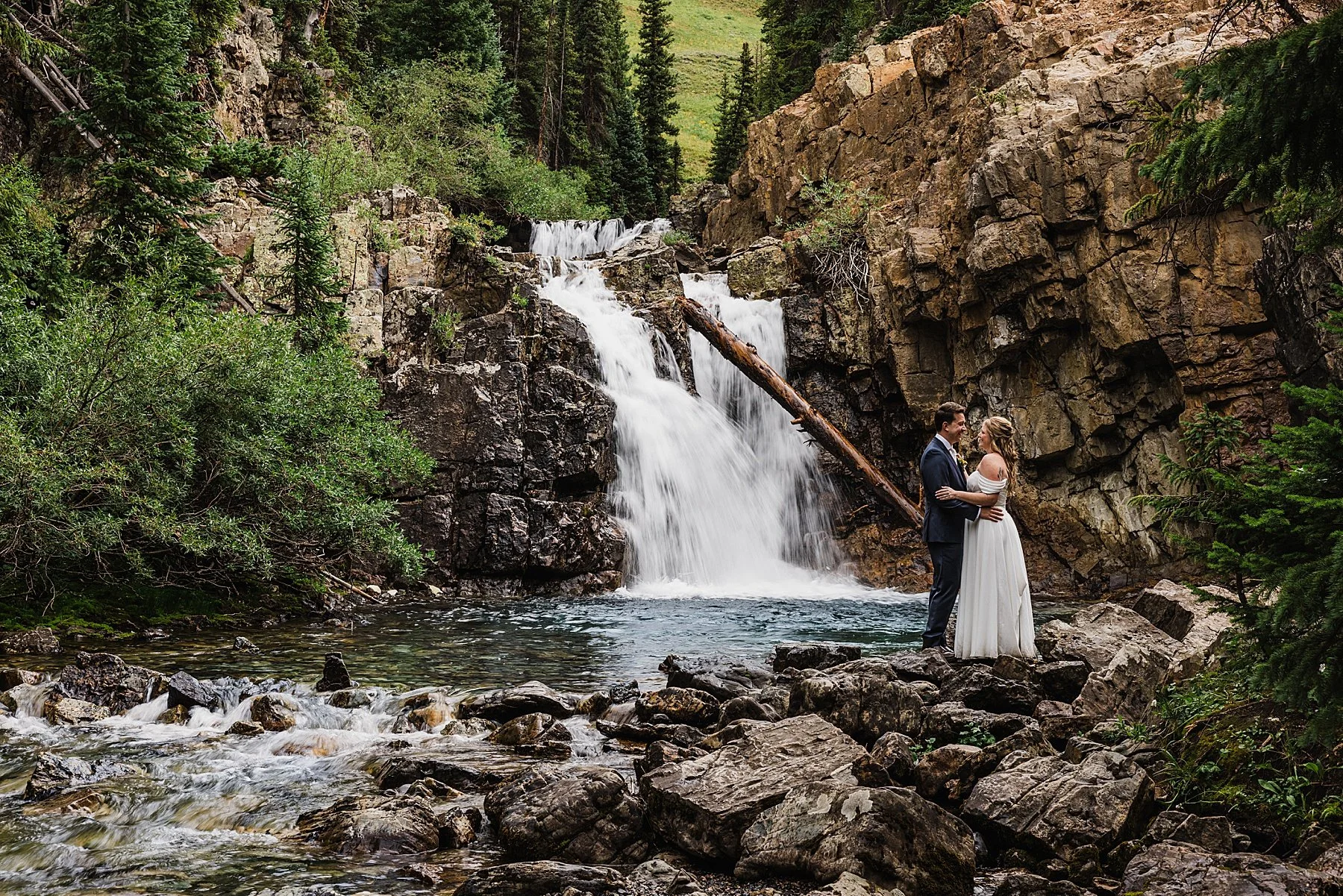
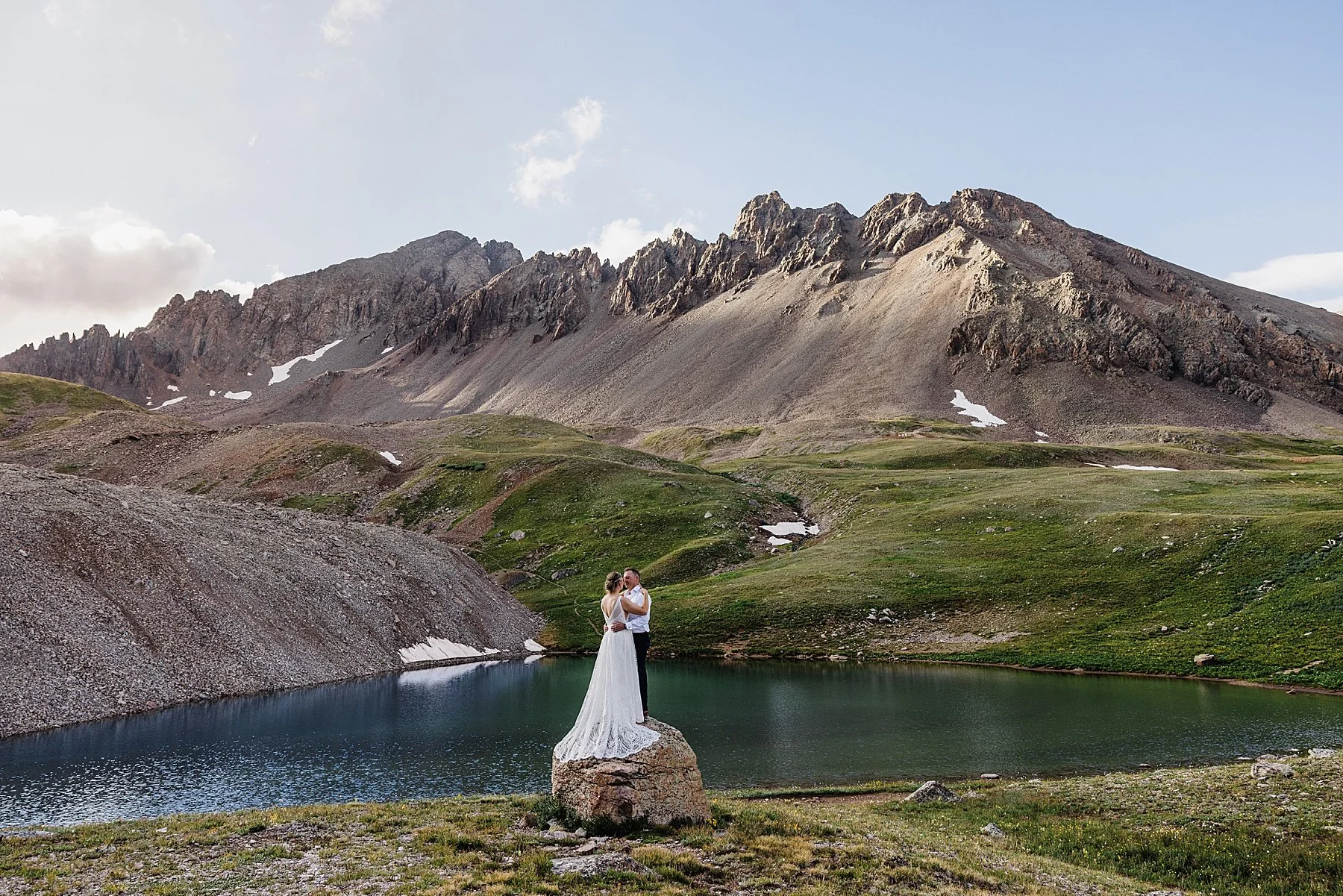








































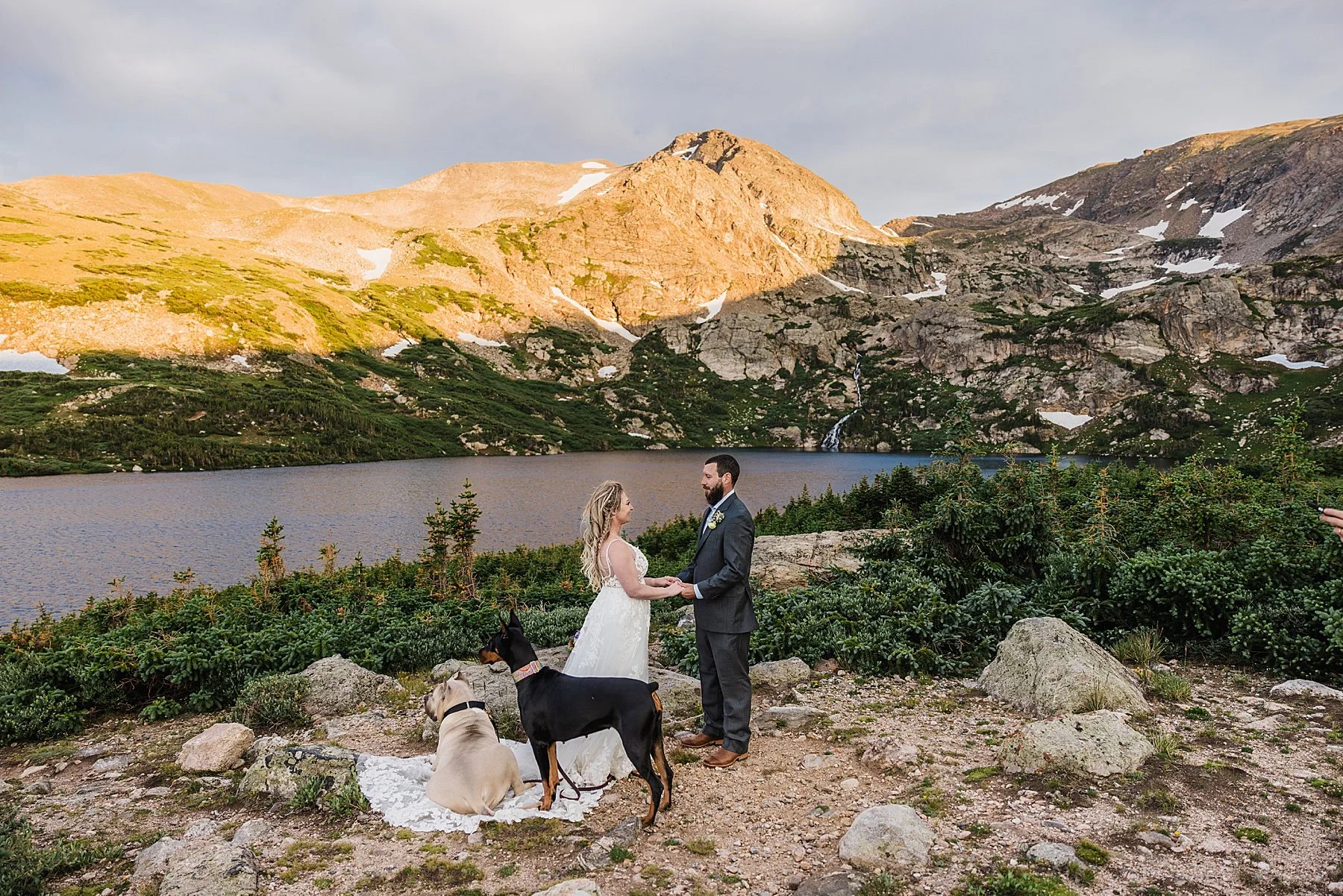



































Aspen, Colorado Elopement Photo + Highlight Film